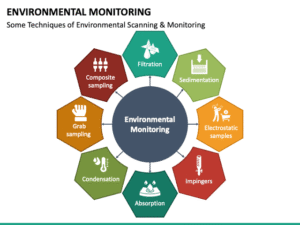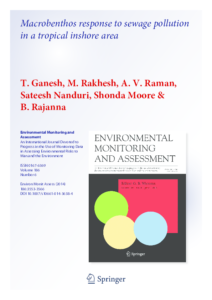Back to: Environmental Biology 300 Level
Welcome to class!
Imagine waking up one morning and noticing that the fish in your community river have all died, or the air around your area smells different and makes it hard to breathe. Before any lasting action can be taken, we must first understand what has gone wrong, how serious it is, and what is causing the problem. This is where environmental monitoring and assessment come in—they help us detect changes in the environment, measure their impact, and decide how best to respond.
Environmental Monitoring And Assessment
What is Environmental Monitoring?
Environmental monitoring is the process of regularly observing, measuring, and recording changes in the environment over time. It helps us keep track of pollution levels, climate conditions, biodiversity, and more. Monitoring is important for identifying trends, detecting environmental problems early, and ensuring that regulations are being followed.

What is Environmental Assessment?
Environmental assessment involves evaluating the results of monitoring to understand the causes and potential impacts of environmental issues. It helps decision-makers plan development activities while considering environmental consequences. Assessments are also used to suggest ways to prevent, reduce, or fix environmental damage.
Why Monitoring and Assessment Matter
They provide early warnings about environmental risks like water pollution or air contamination.
They help in tracking the effectiveness of environmental policies or regulations.
They guide planning and development, such as deciding where to build roads or factories.
They protect human health by ensuring that environments remain safe for living, farming, and fishing.
Methods of Environmental Monitoring
Air Quality Monitoring – Using sensors to check for pollutants like carbon monoxide and sulphur dioxide in cities like Lagos and Port Harcourt.

Water Quality Testing – Sampling rivers and wells for contaminants, especially near industrial areas or oil-producing zones.
Soil Testing – Checking soil for heavy metals or pesticide residue, especially on farmlands.
Biodiversity Surveys – Counting plant and animal species to see how ecosystems are doing.
Remote Sensing and GIS – Using satellite images and maps to observe changes like deforestation or flooding over large areas.
Examples in Nigeria
The Federal Ministry of Environment conducts national environmental assessments for major projects.
NESREA monitors industrial compliance with pollution standards.
NGOs monitor wetlands in areas like Hadejia-Nguru for bird populations and ecosystem health.
Community members in the Niger Delta have been trained to collect water samples to detect oil contamination.
Challenges in Nigeria
Limited access to modern monitoring equipment.


Inadequate data collection and record-keeping.
Low funding for long-term assessment projects.
Weak enforcement of recommendations from assessments.
Summary
- Environmental monitoring involves observing and recording environmental changes over time.
- Environmental assessment evaluates the impact and causes of these changes.
- Monitoring helps in planning, policy-making, and protecting health and nature.
- Common methods include air and water quality testing, soil sampling, and biodiversity surveys.
- In Nigeria, agencies like NESREA and communities play active roles, despite challenges like poor equipment and limited funding.
Evaluation
- What is environmental monitoring, and why is it important?
- Define environmental assessment and explain how it is used.
- List three types of monitoring methods and give one example of each.
- Mention two organisations or groups involved in monitoring in Nigeria.
- Identify two challenges of environmental monitoring and assessment in Nigeria.
You’ve done wonderfully by taking time to understand how we track and respond to environmental changes. Monitoring is like the eyes of the environment—it helps us see clearly and act wisely. Keep learning and stay curious. Afrilearn is proud of your progress!
